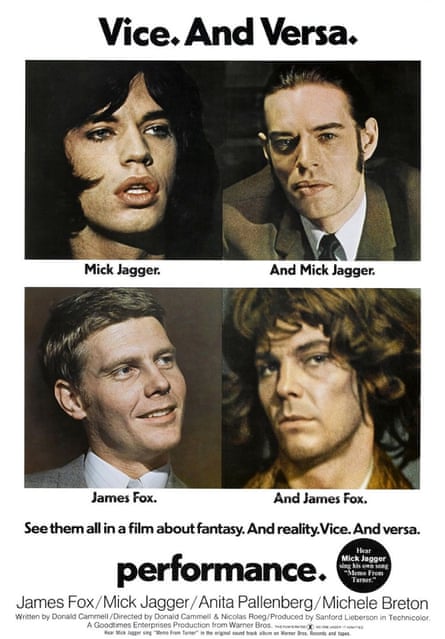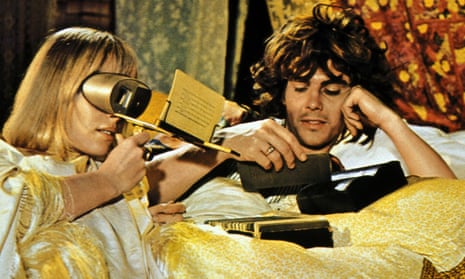James Fox, actor
Playing a gangster was quite a departure for me. I’d mostly played upper-class types. But I’d hung out with Donald Cammell, who wrote the screenplay and co-directed, and I think he’d seen a side of me that said: “James is a raving nutcase, so let’s steer him in the direction of the East End and see what happens.”
And it worked: I fell in love with my character, Chas Devlin, a south London gangster. I prepared for the role very seriously, even visiting Ronnie Kray in Brixton prison. The meeting was quite formal, though – what we really needed was to talk to people on the outside. Much more useful, to perfect the manner and accent, were my visits to the Thomas A Becket pub on Old Kent Road with Johnny Shannon, who played gang boss Harry Flowers. John Bindon, who once dated Christine Keeler and had a role as a violent mobster, also had underworld connections.
Nic Roeg was the other director, and it was his first film. He had a wealth of experience as a cameraman, and I thought the Notting Hill basement scene – in which Chas tries to ingratiate himself with the reclusive rock star played by Mick Jagger – was especially well shot. I already knew Mick and counted him as a friend, but he didn’t take acting very seriously, so you were working against that.
I think he and Anita Pallenberg, who had a big role, were entering a relationship at this time and, as I was basically playing the straight guy and sticking to the script, they liked to use this to shock me. But it was a wonderful film to make, way ahead of its time in terms of gender and identity, offering glimpses into the worlds of rock stars and criminals that were much talked about then but little understood.
Sandy Lieberson, producer
I’d been an agent for the likes of Peter Sellers, Richard Harris and Sergio Leone, but by 1968 I wanted to make the leap into production. Performance was my first film. Donald Cammell originally envisaged Marlon Brando in the Chas Devlin part, but that was always a bit of a fantasy. We were pretty sure James Fox could pull it off, having seen him in films like The Servant.
Mick Jagger was on board from the start, and he brought to the role all the fame and notoriety that was attached to his own name at that time. We wanted to exploit his unusualness, the androgynous sexual aura that hung around him – something that’s harder to appreciate now that he’s a grandfather and such a figure of the establishment.

We didn’t use a studio; everything was done on location. The betting shop scenes were shot on the New Kings Road, and our technical adviser, David Litvinoff, turned out to be a crucial conduit to the whole East-End criminal scene, having been Ronnie Kray’s lover. He arranged for James to visit Ronnie Kray in jail.
We ended up with a non-linear plot because, when I took the rushes to Warner Bros, they hated it. They didn’t think it was releasable, and they sat on it for about nine months. Nic had gone off to make Walkabout, so Donald had to go out there to work on a recut, which introduced the Jagger character earlier, while also toning down the violence and the insinuation of homosexuality, even though it was never graphic.
The movie premiered in Los Angeles, and it was a total disaster. The ratings board originally gave it an X certificate, at a time when major movie companies had a pact not to distribute X-rated films. For a while, my career was in the toilet. I can’t recall if, as has been said, a Warner executive’s wife vomited at a screening – but somebody did throw up at one in Santa Monica and they stopped the show. I felt like I’d gone from being a fairly successful agent to a failed producer, but after that I started producing with David Puttnam, going on to make That’ll Be the Day.
Performance eventually found a small audience in the US, but it was never a commercial success. Only later did it build a reputation. It was a product of its era: back then, you could make an unusual movie without worrying about things like revenue projection. It was a more impulsive, chance-taking time.

Comments (…)
Sign in or create your Guardian account to join the discussion